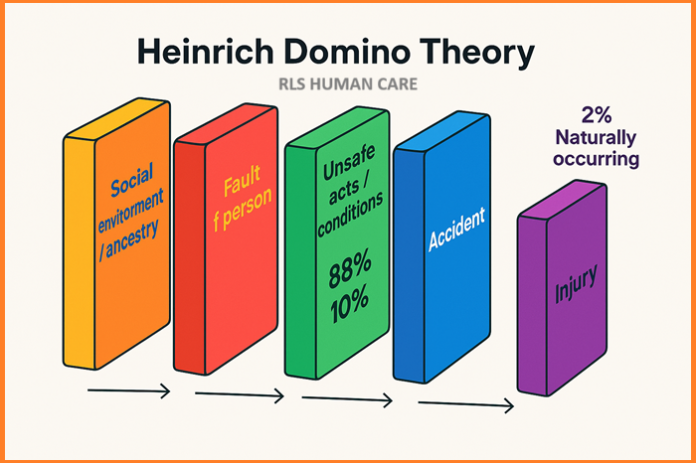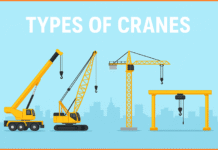The Heinrich Domino Theory, proposed by H.W. Heinrich in the 1930s, is one of the earliest and most influential models in the field of occupational health and safety. The theory revolutionized how industries think about workplace accidents, emphasizing that most incidents are not random but result from a chain of events — much like a row of falling dominos. When the first domino topples, a predictable sequence unfolds, ultimately leading to injury. By identifying and removing one of these dominos, particularly early in the sequence, accidents and injuries can be prevented.
Contents
The Five Dominos: The Chain of Accident Causation
Heinrich conceptualized accident causation as a linear sequence of five interrelated factors:

- Social Environment and Ancestry
This first domino represents the underlying background and personality traits of a person. These may be influenced by upbringing, education, environment, or inherited tendencies. For example, a worker may have developed a lax attitude toward rules due to early life experiences. - Fault of the Person
This domino is about personal behavior, character flaws, or attitudes such as recklessness, impatience, or lack of attention. It is often seen as a reflection of the individual’s response to their social environment. Fault of the person is considered a precursor to unsafe choices. - Unsafe Acts and Unsafe Conditions
This is the critical point in the sequence. According to Heinrich, 88% of all accidents are caused by unsafe acts (e.g., bypassing safety procedures, not using PPE), while 10% result from unsafe conditions (e.g., broken machinery, slippery floors). Only 2% are attributed to unpreventable natural causes, such as lightning strikes or unavoidable medical events. - Accident
The fourth domino is the event itself — a slip, fall, impact, explosion, or any other incident. This is the direct result of the unsafe act or condition. - Injury
The final domino is the outcome — the injury sustained. This could range from minor cuts to life-threatening trauma, depending on the nature of the accident.
The Domino Effect: A Causal Chain
The strength of the Domino Theory lies in its simplicity: if you remove one domino, especially early in the chain, the sequence can be broken, and the accident — along with the injury — can be prevented. Most modern interpretations focus on eliminating unsafe acts, since they are the most frequent contributors to accidents.
Application in Workplace Safety
Heinrich’s model underscores the importance of:
- Training and education to address the root behaviors contributing to unsafe acts.
- Leadership and supervision to cultivate a safety-first culture.
- Proactive hazard identification and correction of unsafe conditions.
- Behavioral safety programs aimed at reshaping how workers perceive and act on risks.
It also highlights that blaming the individual without addressing environmental or systemic factors is short-sighted. For instance, if a worker consistently bypasses safety protocols, it may reflect deeper issues like unrealistic production demands or inadequate training.
Criticism and Modern Perspective
While Heinrich’s theory laid the groundwork for safety management, modern safety science has evolved to include more complex models that account for organizational culture, systems thinking, and human error frameworks. Critics argue that the Domino Theory overemphasizes individual fault and underrepresents organizational responsibility.
Nonetheless, Heinrich’s core message — that most accidents are preventable and that addressing behavior and conditions early can stop injuries from happening — remains foundational in safety practices today
The Heinrich Domino Theory reminds us that accidents are rarely random. By understanding the sequence from social environment to injury, and by focusing on reducing unsafe acts and conditions, workplaces can lower the risk of harm. Prevention, in this model, is not just possible — it’s predictable.





